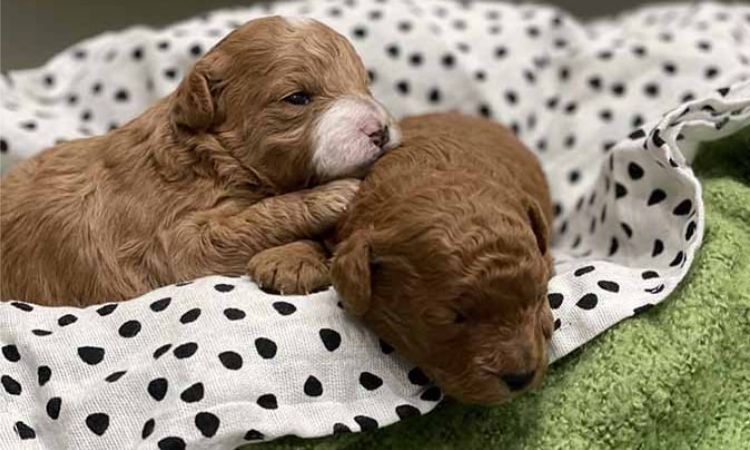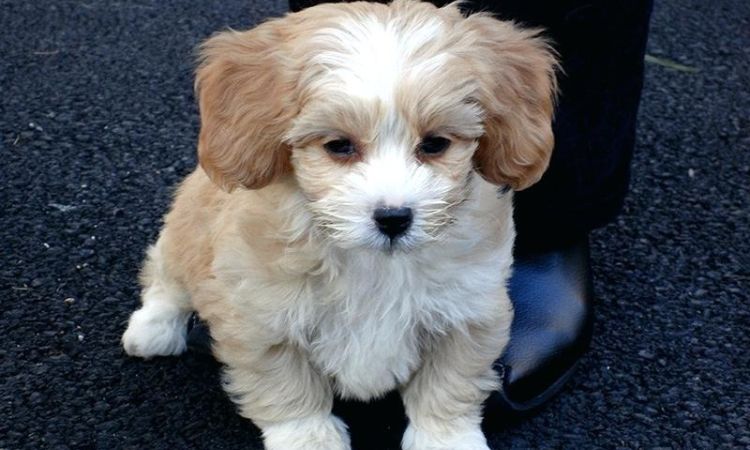When you think of a Poodle chances are you picture those signature curls fluffy, stylish, and full of personality. But if your Poodle’s coat looks unusually straight, you might be wondering what’s going on. Is it normal? Will the curls ever come in? Don’t worry—you’re not alone in asking.
In this guide from Nexus-pets, we’ll break down why some Poodles have straight hair early on, and when you can expect those iconic curls to make their appearance.

Genetic Factors Behind Coat Texture
The texture of a Poodle’s coat—whether curly, wavy, or straight—is primarily determined by genetics, especially the presence or absence of the “curl gene” (commonly referred to in scientific terms as the KRT71 gene).
This gene plays a crucial role in shaping the structure of the hair follicle. Dogs that inherit two copies of the curl gene (homozygous) from their parents typically develop the iconic tight curls associated with standard Poodles. These curls are not only aesthetically distinct but also help trap dander and loose hairs, contributing to the breed’s reputation as “low-shedding.”
On the other hand, dogs that inherit only one copy of the gene (heterozygous) often show looser curls or wavy hair. Their coat may appear inconsistent, combining both curly and straighter patches, especially during early development.
If a Poodle lacks both copies of the curl gene, the result is a mostly straight coat, which may confuse new owners expecting the breed’s signature look. While these dogs are still Poodles by breed standard, their coats can resemble those of other breeds or mixed breeds, raising questions about lineage if not properly understood.
Genetic inheritance follows a predictable pattern, so understanding a Poodle puppy’s parentage and DNA profile can help breeders and owners anticipate the eventual coat type. This is especially important for those selecting pets based on grooming needs or allergy considerations.
You may also be interested in: Do Poodles Shed?
Environmental and External Influences on Hair Texture
While genetics largely determine a Poodle’s coat type, external factors can also play a temporary role in altering its appearance. Grooming practices, in particular, can give the illusion of straight hair even in dogs genetically predisposed to curls.
- Brushing and Blow-Drying: Frequent brushing, especially when done with force or improper tools, can temporarily stretch and straighten the hair shaft. Similarly, blow-drying the coat—particularly without a diffuser or at high heat—can cause the curls to loosen or flatten, making the fur appear straighter than it naturally is.
- Heat Exposure and Grooming Products: Excessive heat from grooming tools like hairdryers, or the use of certain shampoos, conditioners, or straightening sprays, can impact the coat’s appearance. While these products can smooth and soften the hair, they don’t alter the genetic structure of the curl and thus don’t create permanent changes.
- Temporary Effects Only: It’s crucial for owners to understand that these external influences only result in temporary changes to the coat texture. As the hair regrows or when the dog gets wet, the natural curl pattern will typically return, assuming the dog carries the genes for curly hair.

When Do Poodles Develop Their Curls?
Poodle puppies are typically born with a soft, fine, and often straight or slightly wavy coat. This “puppy coat” feels silky to the touch and lacks the dense, tight curls that are iconic in adult Poodles. While some puppies may show early signs of waviness or mild curl, these are usually loose and underdeveloped compared to their adult coat.
Timeline for Curl Development
Most Poodles begin transitioning to their adult curly coat at around 6 to 8 months of age, though the process can start as early as 4 months or as late as 12 months. During this period, the puppy fur gradually falls out and is replaced by coarser, denser hair that forms more distinct curls. This transition is often subtle at first but becomes more noticeable over time.
By the time a Poodle reaches 12 to 18 months, the coat typically matures into its full adult texture—whether that be tightly curled, loose and wavy, or a mix depending on genetic factors.
Factors Influencing Curl Emergence
Several factors can affect the timing and degree of curl development:
- Genetics: The presence or absence of the KRT71 curl gene plays a major role in how curly the adult coat will be.
- Breed size: Standard Poodles may develop their adult coat more slowly than Miniature or Toy Poodles, with some Standards not showing full curl patterns until after 12 months.
- Coat color: Anecdotally, some coat colors (like white or apricot) may have slightly different textural development timelines, though this is still under debate.
- Crossbreeding: In Doodles or other Poodle mixes, the influence of the non-Poodle parent (e.g., Golden Retriever, Labrador, Bernese Mountain Dog) can dramatically affect both the timeline and final texture of the coat. Some may never develop true Poodle curls at all.

Hair Growth and Puppy Coat Transition
Poodles undergo a distinct process of hair growth and coat transformation as they mature from puppies to adults. At birth, poodles have a soft, fine puppy coat that serves as a protective, insulating layer. This initial coat is often straight or wavy and lacks the dense curls typical of adult poodles.
The transition from the puppy coat to the adult coat begins around 6 to 9 months of age for Miniature and Toy Poodles, and somewhat later for Standard Poodles, often between 9 and 16 months. During this stage, the puppy fur gradually sheds, making way for new, coarser, and curlier hair. This changeover is a slow, gradual process that can take several months, typically lasting anywhere from 9 to 18 months, depending on the individual dog’s genetics and breed type.
Throughout this phase, the coat may appear patchy, uneven, or prone to matting, requiring careful grooming and attention. It’s essential for owners to exercise patience and avoid forcing or manipulating the coat, allowing the adult curls to develop naturally over time. Proper care during this period will ensure a healthy, vibrant adult coat that reflects the classic Poodle look.
In the end, whether your poodle’s coat is straight or curly, the most important thing is their health and happiness. A poodle with a well-cared-for, shiny coat is a happy poodle. So, embrace your pup’s unique look, and remember that with a little patience and the right care, those signature curls are likely just around the corner.






